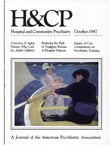A Method for Comparing Two Systems of Acute 24-Hour Psychiatric Care
Abstract
A quasi-experimental method was developed to evaluate the cost-effectiveness of a public system of 24-hour acute psychiatric care in Santa Clara County, California, before and after a new treatment setting was introduced. The original system relied on a 54-bed psychiatric unit in a county general hospital; the new system consisted of a 20-bed unit in the general hospital plus a 45-bed nonhospital psychiatric health facility. The study demonstrated that the per diem cost of the psychiatric health facility was approximately 60 percent that of the original general hospital unit, but the average difference in cost per episode between the two systems was only about $25, primarily due to longer lengths of stay in the new system. In addition, patients treated in the new, combined system appeared sicker at discharge than those treated in the old system. The findings suggest the importance of simultaneously evaluating both cost and treatment effectiveness to make sure that one element does not dominate program direction at the expense of the other.
Access content
To read the fulltext, please use one of the options below to sign in or purchase access.- Personal login
- Institutional Login
- Sign in via OpenAthens
- Register for access
-
Please login/register if you wish to pair your device and check access availability.
Not a subscriber?
PsychiatryOnline subscription options offer access to the DSM-5 library, books, journals, CME, and patient resources. This all-in-one virtual library provides psychiatrists and mental health professionals with key resources for diagnosis, treatment, research, and professional development.
Need more help? PsychiatryOnline Customer Service may be reached by emailing [email protected] or by calling 800-368-5777 (in the U.S.) or 703-907-7322 (outside the U.S.).



